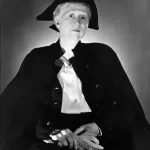A Poetry Mixtape Edited by David Ly
David's Liner Notes
In “The Wildness in Poetry” I have curated a selection of poems that I feel showcase how poetry can use nature and animals as a means of exploring identity, fears, joys, and curiosity. By rooting a poem in one or more aspect(s) of nature, these poets each uniquely exemplify the versatility of animal-themed poetry in speaking to the nuances of human existence.
I turn to the natural world for the boundless possibilities of metaphors and allegories that the imagery can offer. Oftentimes, when writing about heavy topics that we as humans experience, I find it helpful to encapsulate these experiences through the usage of non-human things. In a way, “writing wildly” creates a distance between us and our fears, apprehensions, and musings, making meditations on sometimes difficult feelings easier.
Within these poems, I tried to collect an array of not only images, but tones and moods as well as an attempt to help you see how different animals (and plants) can be plucked from their natural habitat and used as stand-ins for human experiences. We have the quiet intimacy of picking up a dandelion to meditate on longing; connection is also explored in an unexpected way in “The Parable of the Eagle”; and we even dive into the fantastical as Phyllis Webb recounts the days of the Unicorn.
Each of these poems, along with the recommended reading of others, uniquely positions the wilderness in the text that can be surprising in its manner of exploration of human anxieties as well. For example, though Lorna Corzier’s narrator speaks on their fear of snakes, there is also beauty in it, reminding us that though our fears may be crippling at times, there is something valuable in taking a moment to sit with them no matter how uncomfortable they may be.
I invite you then to explore these wild poems, and hopefully in turn, come closer to the wildness that exists in you; something to be held dearly and close as you write your own poems.
The Poems
J-Card (PDF)
Recommended reading
The Animal in the Room by Meghan Kemp-Gee
- This collection excels in using all sorts of animals to meditate on the human experience, oftentimes by putting animals in very human settings.
“For the Boy Standing Under the Drainpipe” by Cheryl Savageau
- A simple, yet effective poem which can be used a great example for character study.
Mama Amazonica by Pascale Petit
- This book is a good example of a poet who is known for writing heavily with animals. By turning the Amazon into a psychiatric ward, it centres around mental health and endangered animals. Warning: some content does deal with the poet’s mentally ill mother and the consequences of abuse.
The Pleasure of Taking the Long Way: On Puzzling the Route to a Poem by Lauren Camp
- This is a very short essay that reveals how taking your time to edit a poem can add something unexpected. I like to think of this in terms of taking a break from your poems and filling your mind with imagery and ideas from life and seeing if they can be added to your edits.
Slow Lightning by Eduardo C. Corral
- An excellent book that I go back to often. The specific animal imagery chosen in these poems really make for a dynamic collection about family, legacy, and culture.
“Daffodil” by Florence + The Machine
- A song that speaks to hope and the coming of spring. Pay attention to the lyrics as they are quiet poetic and use unexpected language and imagery.










